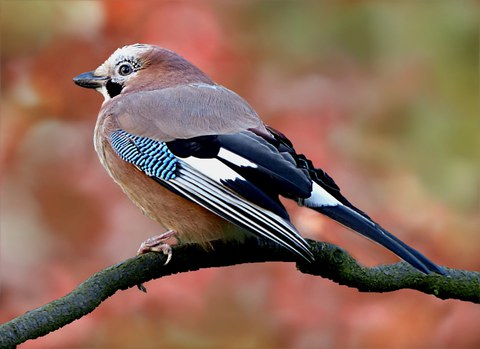Jul 18, 2023
Animals and Money: Hiding Seeds and Growing Trees – How Eurasian Jays Save Billions of US$

Eurasian jays maintain oak forest and in doing so, save humans a lot of money.
Trees have a large positive impact on reducing the CO2 level of the world. Trees control ground erosion, especially in headwater regions1,2 and there are indications that trees have positive aspects on human health3. In European forests, oaks are among the most common species2. The maintenance of biodiversity of European forests greatly depends on various bird species. For oak trees, this is the Eurasian jay Garrulus glandarius4, that occurs in Europe and Asia.
The bird lives in the dense foliage of the forests5. Aside from its main food source acorns, the Eurasian jay also eats beechnuts and unripe hazelnuts. The Eurasian jay buries collected acorns as an all-year food supply. However, it is estimated that the bird forgets about more than 60% of its hidden seeds, from which new oaks can grow 6,7,8,9. This article addresses the economic benefits of natural oak rejuvenation all over Europe by Eurasian jays, compared to rejuvenation of oaks by humans.
Eurasian jays can display either short- or long-time storage of food. Food stored short-term is meant to be instantly available and is therefore not buried as deep as food stored long-term8. Especially the long-time stored seeds are the basis of new oak trees because they are often forgotten over the winter months.
Not only the time of storage is important, but also the quality of acorns is considered. Bigger acorns often are stored long-term, while smaller acorns are directly consumed. The Eurasian jay also preferentially collects ripe and healthy acorns. With the acorns deeply buried under the earth in specifically selected bright hiding places, oak seedlings face optimal growing conditions7. Eurasian jays do not re-use hiding places, meaning the area where acorns can be buried, and oak trees will grow expands7. Also, if a jay is observed by other jays while hiding acorns, it will hide its catch further away than if it is unobserved10. This will facilitate the long-term dispersal of oaks.
A single jay can hide up to 11,000 acorns per year11, of which 60% (6,930 seeds) would not be eaten. 50% of these hidden seeds (~ 3,465) could grow to oaks annually9. In 2015 in Europe 15 million-29.3 million Eurasian jays were counted12. Accordingly, every year around 52 - 102 billion oak trees are planted by these birds in Europe.
For the area of the Stockholm National City Park, it was estimated that oak rejuvenation performed by humans instead of jays would cost US$2,100 to US$9,500 per ha per year9. In the Stockholm national park 84 jays were counted, and a similar number of jays are estimated to occupy Europe’s oak forests. Of Europe´s 227 million ha forest, in 2020 around 10% of forest was oak forest area2. If oak rejuvenation of these 22.7 million ha was performed by humans instead of Eurasian jays, it would cost US$47.7 billion up to US$215.7 billion per year.
A single jay that lives up to 16 years13 is worth US$400 to US$1,808 only in the perspective of planting new oak trees. Jays can preserve the European oak forests by spreading and burying oak seeds, in a larger area and in less time than humans would need9. In Europe, oak rejuvenation as a by-product of foraging performed by jays instead of humans saves $47.7 billion to $215.7 billion every year9.
Annual forest losses in Europe increased in the years 2016 to 201814. If human-caused deforestation continues this way, jays will unlikely be able to maintain the oak population in Europe themselves. Oaks are essential for the survival of Eurasian jays. If the oak population declines, Eurasian jays themselves may be threatened. This analysis of the economic importance of Eurasian jays in European oak forests can be applied to almost every forest in the world, since animals are contributing to forest maintenance in many areas in the world. This statement also shows an additional detrimental consequence of deforestation that has barely been considered in recent years: the destruction of forests also destroys their self-regeneration potential.
Issue 7 (PDF)
Elisa Peters
